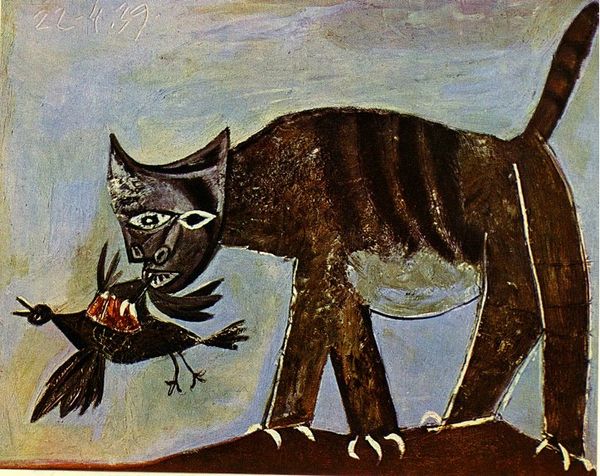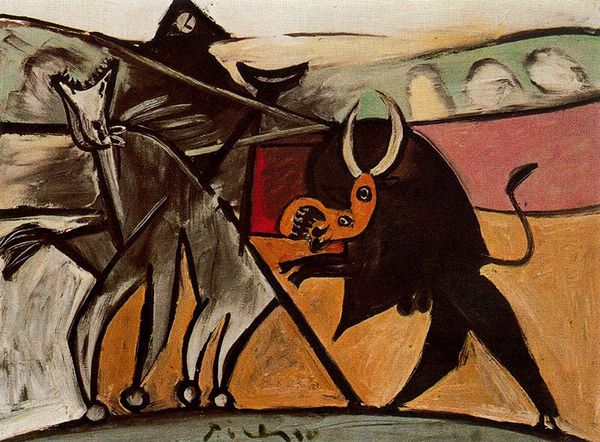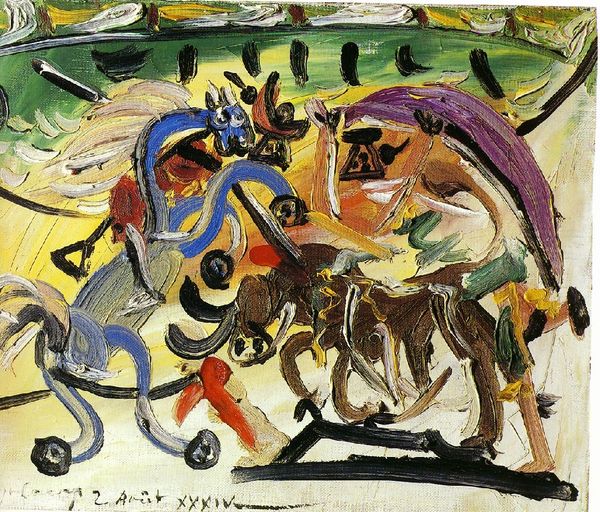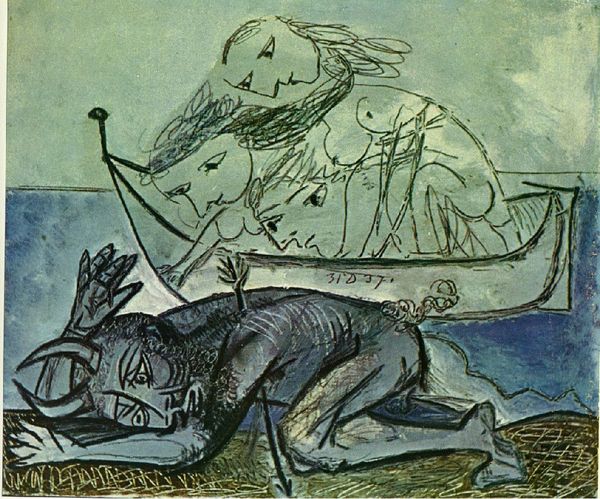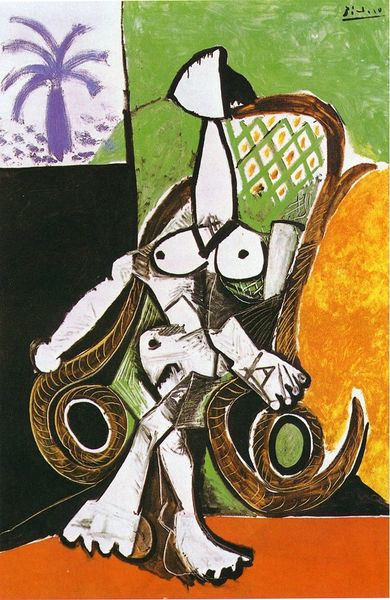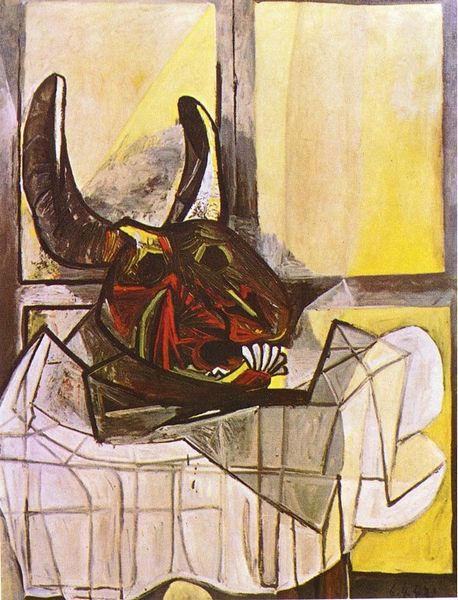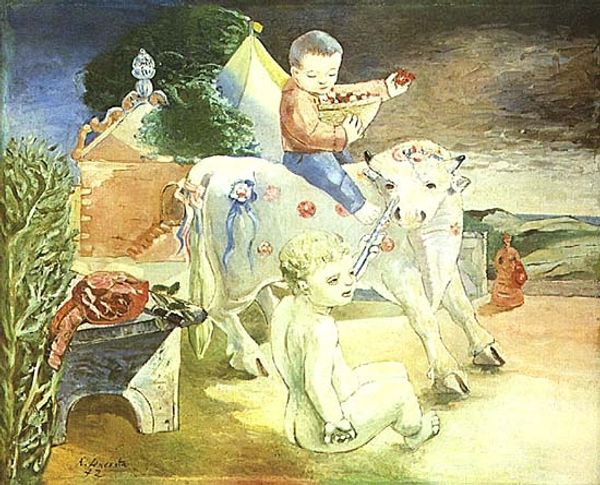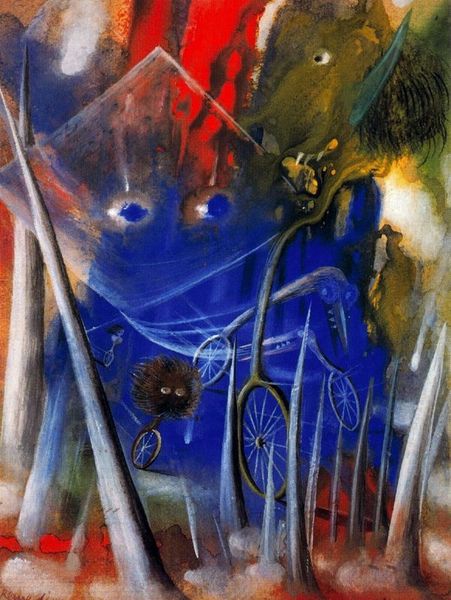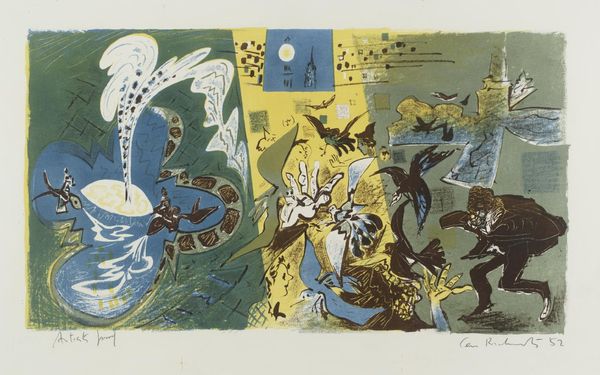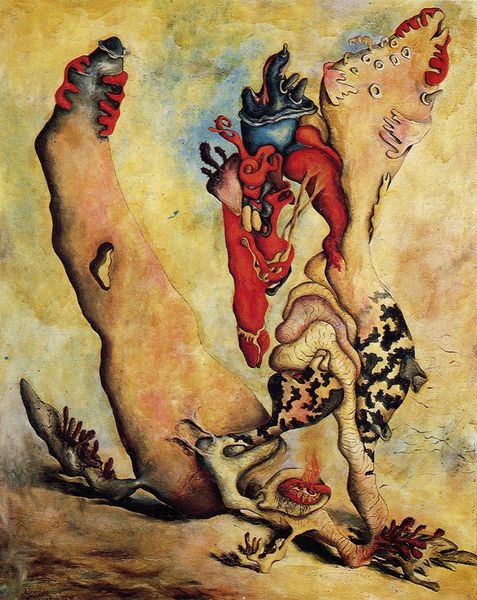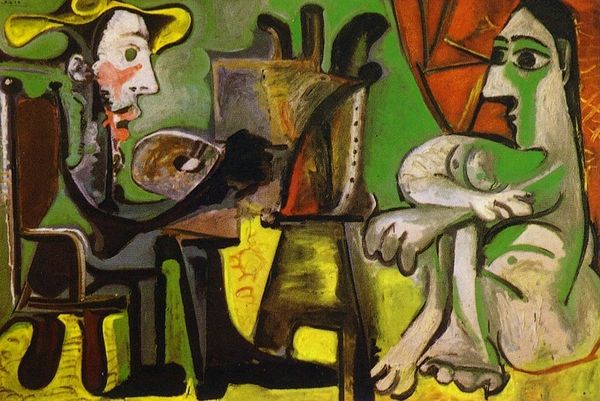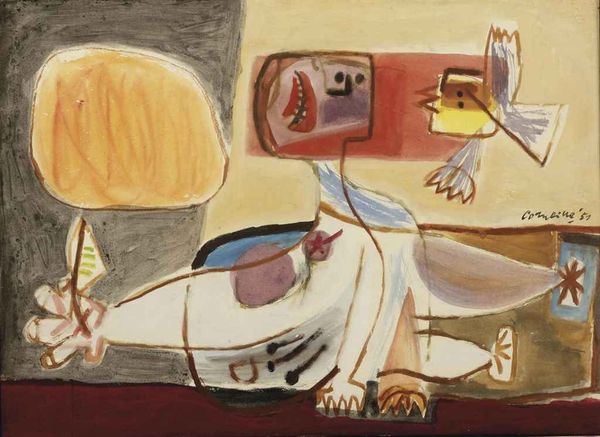
painting, oil-paint
#
cubism
#
abstract painting
#
animal
#
painting
#
oil-paint
#
figuration
#
acrylic on canvas
#
naive art
#
abstraction
#
modernism
Copyright: Pablo Picasso,Fair Use
Curator: Standing before us is Pablo Picasso's "Still Life with Cat and Lobster," created in 1962 using oil paint. Editor: Oh, it's delightfully unsettling! A menagerie of the macabre rendered in that signature Cubist style. The cat’s got a bit of a mischievous grin, wouldn't you say? As if he knows something we don't. Curator: Picasso was no stranger to blurring the lines between observer and observed, was he? There's an inherent tension in still life itself, capturing fleeting moments in the realm of domesticity. Picasso painted during times of immense sociopolitical change. It is hard not to consider a work from this time as potentially socially symbolic, even one that appears on the surface as intimate or inconsequential. Editor: Perhaps it's simply a rumination on predator and prey? The domestic cat amidst an oceanic spread. I sense also that it's an absurd power dynamic where nobody truly wins. Lobster beware. Curator: Or maybe it's a nod to the burgeoning environmental concerns of the early 60s. We might interpret the tension between domestic animal and wildlife as symbolic of encroaching pollution. I do find myself wondering if there's a narrative about the commercial food chain bubbling beneath the surface. Editor: A darkly funny food chain indeed. There’s something inherently humorous about Picasso's treatment of these subjects. The color palette dances from mustard yellow to rusty lobster red. It's a feast for the eyes even if the meal looks... precarious! Curator: Absolutely! Picasso's ability to inject social critique into his unique take on familiar genre paintings highlights how art serves as a barometer of the times. The gallery setting adds an additional layer, where a still life meant to evoke intimacy suddenly plays to broader political, or even ecological anxieties. Editor: So, a simple kitchen tableau becomes a cultural manifesto? Not just art for art's sake, but art for argument’s sake? Well, it seems this seafood still life has served up quite the conversational feast! Curator: Precisely. That is one way to see it, certainly. It proves once again that even the humblest subjects can provoke deep thinking in unexpected contexts.
Comments
No comments
Be the first to comment and join the conversation on the ultimate creative platform.
